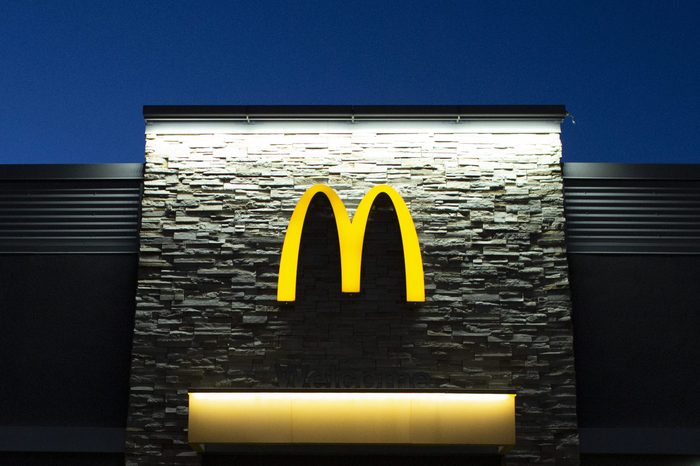
Food for thought
If any single industry has generated some seriously wild rumors, it’s the fast-food industry. People are (understandably!) concerned about what’s in their food, especially coming from franchises that churn out massive amounts of it for what might seem like suspiciously low prices. So when rumors about what’s in that food, or what the companies that make it might cover up, begin to circulate, people tend to eat them up (so to speak). Some of these rumors might seem absolutely ridiculous on paper. But considering its history, filled with infamous lawsuits, critical documentaries, and supplier scandals, there are plenty of people that wouldn’t put anything past McDonald’s. Learn which of these hugely popular, often disturbing rumors are fact and which are fiction. Beyond McDonald’s, these are some of the craziest myths about fast food that you shouldn’t believe.
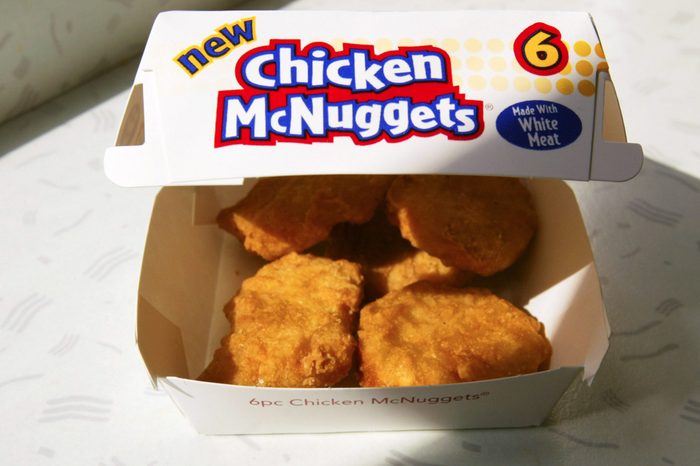
The McNuggets are made with pink slime
False. Ah, the pink slime. This was a quintessential example of the Internet running absolutely wild with a disturbing food-origin story. Pink slime actually is real—it’s what happens when meat is “mechanically processed,” removing all of the edible parts from the bones so that less goes to waste, and then (sometimes) treated with anti-microbial ammonia. But McDonald’s doesn’t use it. “The [pink slime] photo is not a representation of how we create our Chicken McNuggets®, or for that matter, any item on our menu,” McDonald’s FAQ page reads. However, it’s a bit more complicated than that. McDonald’s disavowal of “pink slime” is fairly recent, and they only stopped using mechanically processed beef in 2011. McNuggets, in turn, have been made with all white meat since 2003.
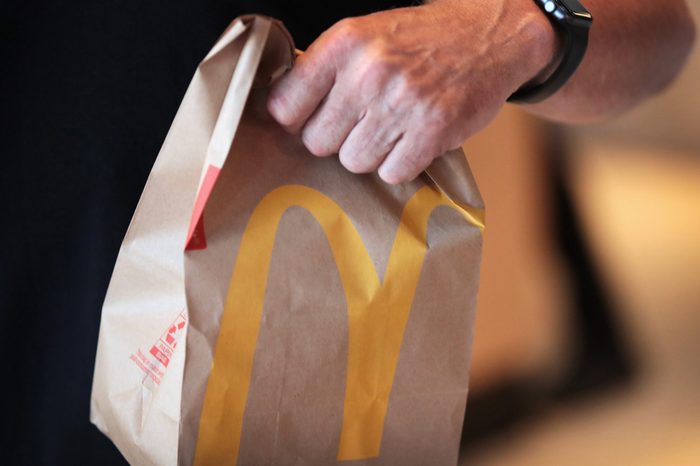
They once made a sandwich with seaweed in it
True! Anyone who frequented McDonald’s in the early 1990s might remember the “McLean Deluxe,” a rather lackluster attempt at a health-food option. Advertised as containing ten to 16 fewer grams of fat than the Big Mac, this burger definitely cut some corners to justify its name. The patty was only 90 percent meat, and the rest of it was…water. Yes, water was their alluringly tasty meat alternative back then. To “bind” the patty together, the food scientists that created it used a seaweed extract called carrageenan. While this is edible—and actually not an uncommon food additive—McDonald’s consumers were very much turned off by the idea of a seaweed burger. The McLean Deluxe is remembered as one of the biggest McDonald’s menu fails of all time.
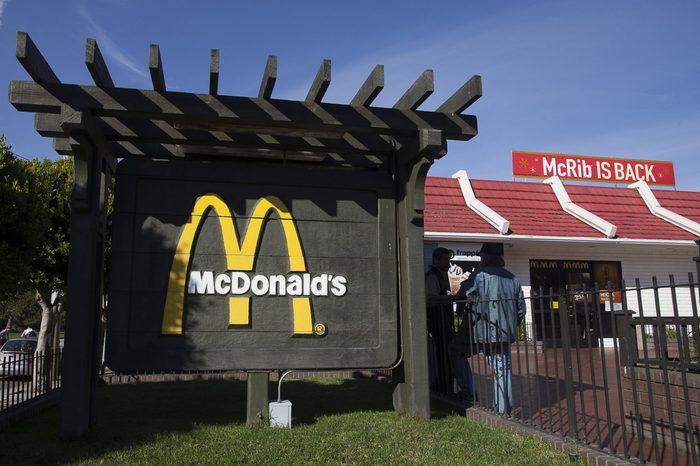
The McRib is made with kangaroo meat
False. This love-it-or-hate-it seasonal item has incited all sorts of wild stories and speculations. And that’s not surprising, considering that this sandwich is something of a perplexing concept. It’s a barbecue pork sandwich that’s supposed to evoke ribs, and is shaped like a rack of ribs—but contains no bones and is not actually rib meat. That fact has led people to throw out all sorts of crazy suggestions about what it actually was made of. One of the suggestions that gained the most traction was that the meat was from kangaroos. Nope—it is in fact pork. And honestly, as wacky fast-food tall tales go, “kangaroo meat” is pretty tame since people do eat kangaroo meat around the world. The truth about the ingredients might actually be worse, depending on how you look at it—read on.
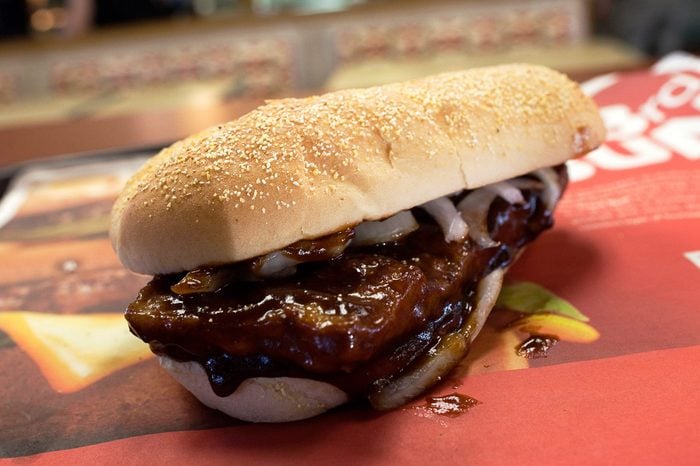
The McRib has more than 70 ingredients
False—but was true at one point. The McRib’s ingredient list sent shockwaves through the Internet in the early 2010s, with everyone from The Week to Time claiming that it contained more than 70 ingredients. And, at that time, it did. Perhaps surprisingly, nearly half of those were actually in the bun. And it wasn’t just the jarring number—it was some of the ingredients themselves. The most cringe-worthy was “azodicarbonamide,” which is a flour-bleaching agent that you’ll also find in foam products like yoga mats. Perhaps because of this coverage, McDonald’s did trim down its McRib recipe. Today, though, you can see on McDonald’s website that it does still have more than 40 ingredients—still, with a whole lot in the bun. (It no longer contains azodicarbonamide, though.) Find out some more facts you never knew about the McRib.
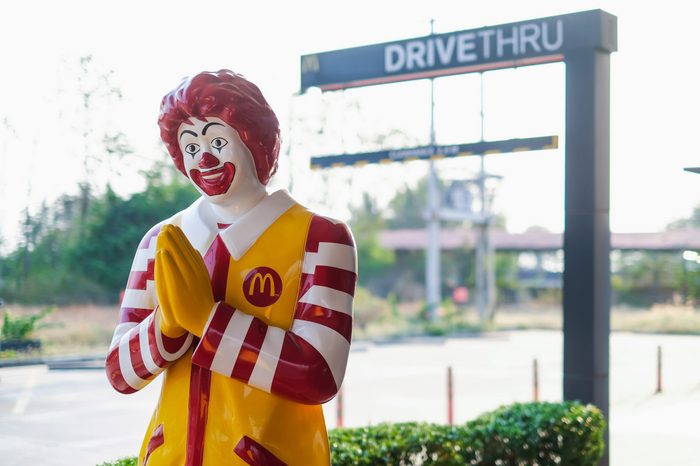
There’s a secret menu
True! Secret menus are experiencing a heyday thanks to the Internet, as people share and consolidate all sorts of menu items and hacks for favorite restaurants. (Which…kind of takes away from the “secret” descriptor, but that’s beside the point.) McDonald’s is no exception, and there are a few, lesser-known “off-the-menu” items that you’ll see circulating. (We even talked about a few!) One is the “Poor Man’s Big Mac,” basically a McDouble with Big Mac sauce and extra condiments. Another is the “Chicken McGriddle,” which is a crispy chicken patty between syrup-soaked McGriddle cakes. However, the secret menu is “secret” and therefore unofficial, so “not everything will be available at every McDonald’s location, and your server may or may not know the lingo,” wrote our sister site Taste of Home. So if you’re going to order off the secret menu, come equipped with an explanation of what the item consists of.
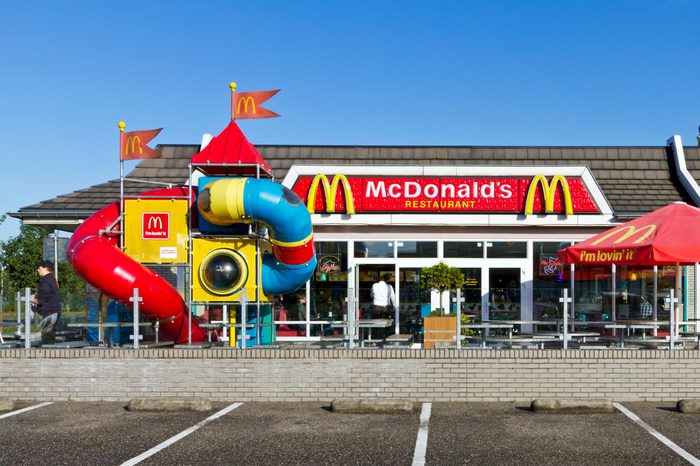
A child died after being pricked by a heroin syringe in a McDonald’s ball pit
False. Those unexplored depths of the ball pits in McDonald’s indoor PlayPlaces made people imagine the worst. And we mean the worst. But the claim that a three-year-old child had died of an accidental heroin overdose after encountering a discarded needle in a ball pit was nothing but a hoax. That doesn’t mean health and safety concerns about McDonald’s PlayPlaces—or fast food play areas in general—aren’t justified, though. Those ball pits and tube tunnels have been subject to plenty of scrutiny from concerned parents and health organizations. One Arizona mom even tested 50 different fast-food playgrounds for bacteria—and of those 50, a full 49 tested positive for some kind of potentially dangerous bacteria. Learn about more potential reasons for the ongoing downfall of McDonald’s PlayPlaces.
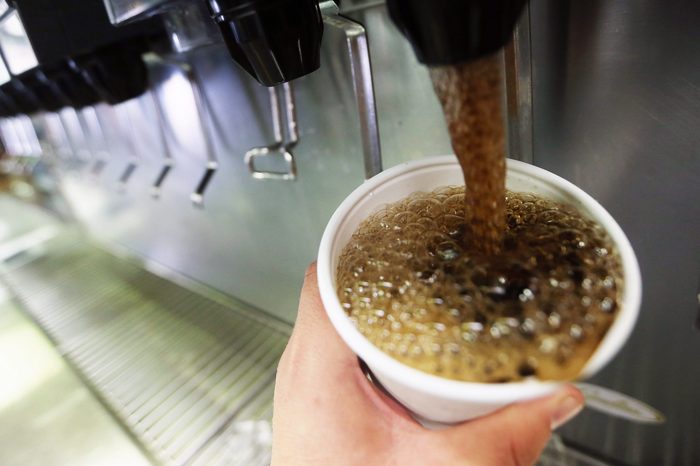
The Coca-Cola tastes different
True! Have you ever questioned whether Coca-Cola at McDonald’s just tastes better, only to decide that you were surely just psyching yourself out? Well, good news—you were right! The recipe for Coca-Cola isn’t different at McDonald’s, but the difference has to do with how McDonald’s prepares it. McDonald’s has a careful process of chilling the soda, which it details on its website. “The water and Coca-Cola® syrup are pre-chilled before entering our fountain dispensers with the ratio of syrup set to allow for ice to melt,” the FAQ page says. This “ratio” ensures that the melting ice is just the right amount, so that your soda is as flavorful as possible. And the fact that the liquid is chilled before it even enters the soda fountains keeps it as cold as possible, preserving both maximum refreshment and maximum carbonation.
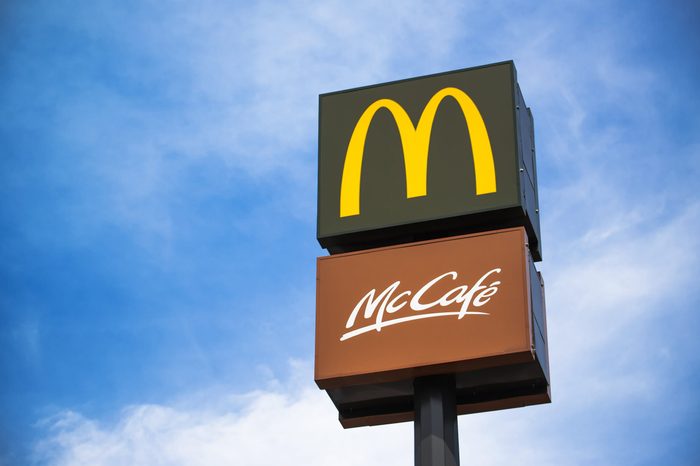
McDonald’s shakes contain no dairy
False. For believers of this rumor, the name said it all. Why would McDonald’s call them “shakes,” not “milkshakes”—unless it legally couldn’t, because they contained no actual milk? With that a foregone conclusion, people started making wild guesses about what was actually in them, from chicken feathers to Styrofoam. But despite the name, the primary ingredient in McDonald’s shakes is ice cream, which in turn has milk as the primary ingredient. So why the ambiguous name? According to McDonald’s FAQ page, it’s because different states have different requirements for what can be called “milkshakes.” So McDonald’s just calls them “shakes” to avoid state-to-state confusion. Which in turn ended up causing a whole lot more confusion.
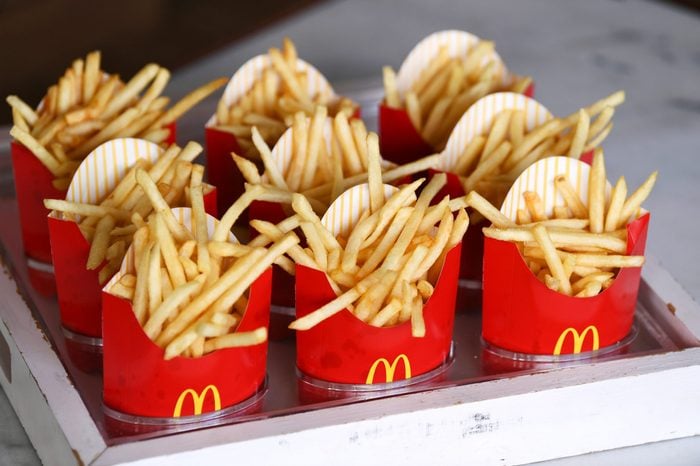
McDonald’s lies about its fries being vegetarian-friendly
False—on a technicality. McDonald’s never lied about the animal products used to make its fries, but it never outwardly said they weren’t vegetarian-friendly, either. First things first: No, the fries are not vegetarian or vegan. In 1990, McDonald’s stopped cooking its fries in beef fat and switched to vegetable oil instead. And that’s where the confusion arose. This publicized swap, understandably, made people think the fries were indeed vegetarian. But this “vegetable oil” still contained “essence of beef” to flavor the fries.
After several separate lawsuits from vegetarians—two of whom were Hindu and abstained from eating beef products for religious reasons—McDonald’s issued an apology. At first, it claimed that it had never outwardly said its fries were vegetarian; it eventually owned up to making misleading claims, though. “We regret we did not provide these customers with complete information, and we sincerely apologize for any hardship that these miscommunications have caused,” said a 2002 statement on the company’s site. McDonald’s agreed to pay $10 million to various Hindu and other groups. It may not have been an outright lie, but it was still a blunder and joined the ranks of these fast-food scandals that rocked the industry.
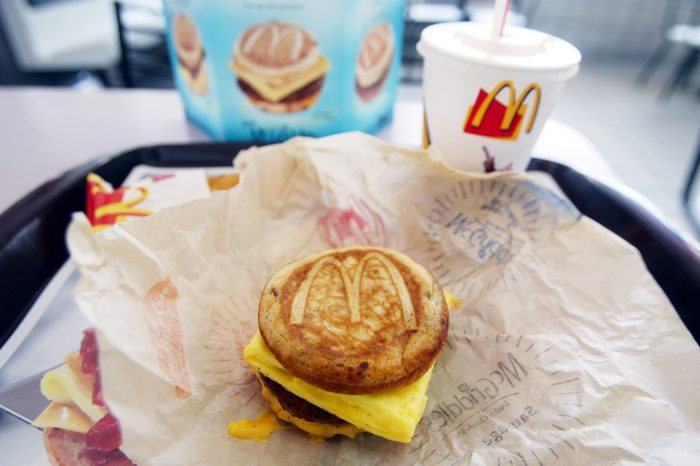
Many of the breakfast dishes don’t contain real eggs
True—if by “real eggs,” you mean “freshly cracked eggs.” Only one of McDonald’s breakfast dishes uses freshly cracked eggs, and that’s the Egg McMuffin. So…what do the other dishes use? Well, they’re still eggs; they’re just not exactly fresh. Most of the breakfast sandwiches contain what’s known as a “folded egg.” These are “liquid eggs that are pre-cooked and folded,” McDonald’s website writes. Those eggs also do contain…stuff that’s not egg. Specifically, nonfat milk, modified food starch, salt, and citric acid. And after cooking and folding the eggs, McDonald’s suppliers “flash-freeze” them, and they’re sent, frozen, to McDonald’s kitchens. So technically they are real eggs, but they’re not just eggs, and they’re certainly not fresh eggs. If you’d prefer 100 percent fresh eggs, ask specifically for a “round egg” on your sandwich, according to a McDonald’s employee on Quora. The employee prepping your meal should acquiesce. Here are some more McDonald’s tips employees won’t tell you.
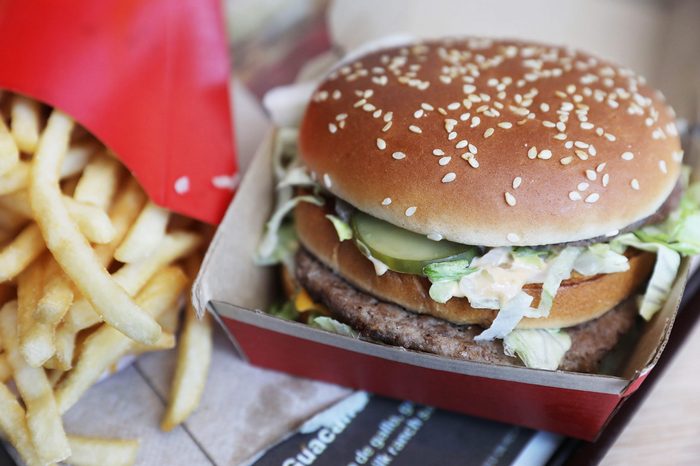
The burgers won’t go bad
False. This rumor took off in 2008, when a woman shared a photo of a 12-year-old McDonald’s burger that was eerily indistinguishable from a just-purchased one. “People always ask me, ‘What did you do to preserve it?’ Nothing – it preserved itself,” she wrote in her blog, calling the burger “a chemical food.” That was the first instance, but similar posts continued to crop up, all arguing that McDonald’s food was so full of fake stuff that it wouldn’t go bad like actual food. But these posts didn’t tackle the science of this phenomenon. In 2010, SeriousEats did, and proceeded to share their findings in 2016. And what they found was that the reason the burgers weren’t “going bad” was because they were drying out before they could rot. And, spoiler alert (literally): All burgers will do that, as will many other foods. J. Kenji López-Alt of Serious Eats rattles off several, including beef jerky, saltines, and croutons.
And López-Alt further debunked the claim by testing it on homemade, obviously chemical-free burgers—and they dried out in the same way McDonald’s burgers did. Furthermore, part of the reason for the longevity of this burger was because it was a regular ol’ McDonald’s hamburger. “A McDonald’s hamburger is small and thin…cooked well-done on a very hot griddle,” López-Alt explained. “These factors contribute to rapid moisture loss, resulting in a burger that dries out long before it can start to rot.” On the other hand, he said that larger McD’s burgers like the Quarter Pounder, though they will still dry out, do show signs of rot at first. Many of these rumors are false, but check out some fascinating true facts about McDonald’s.
